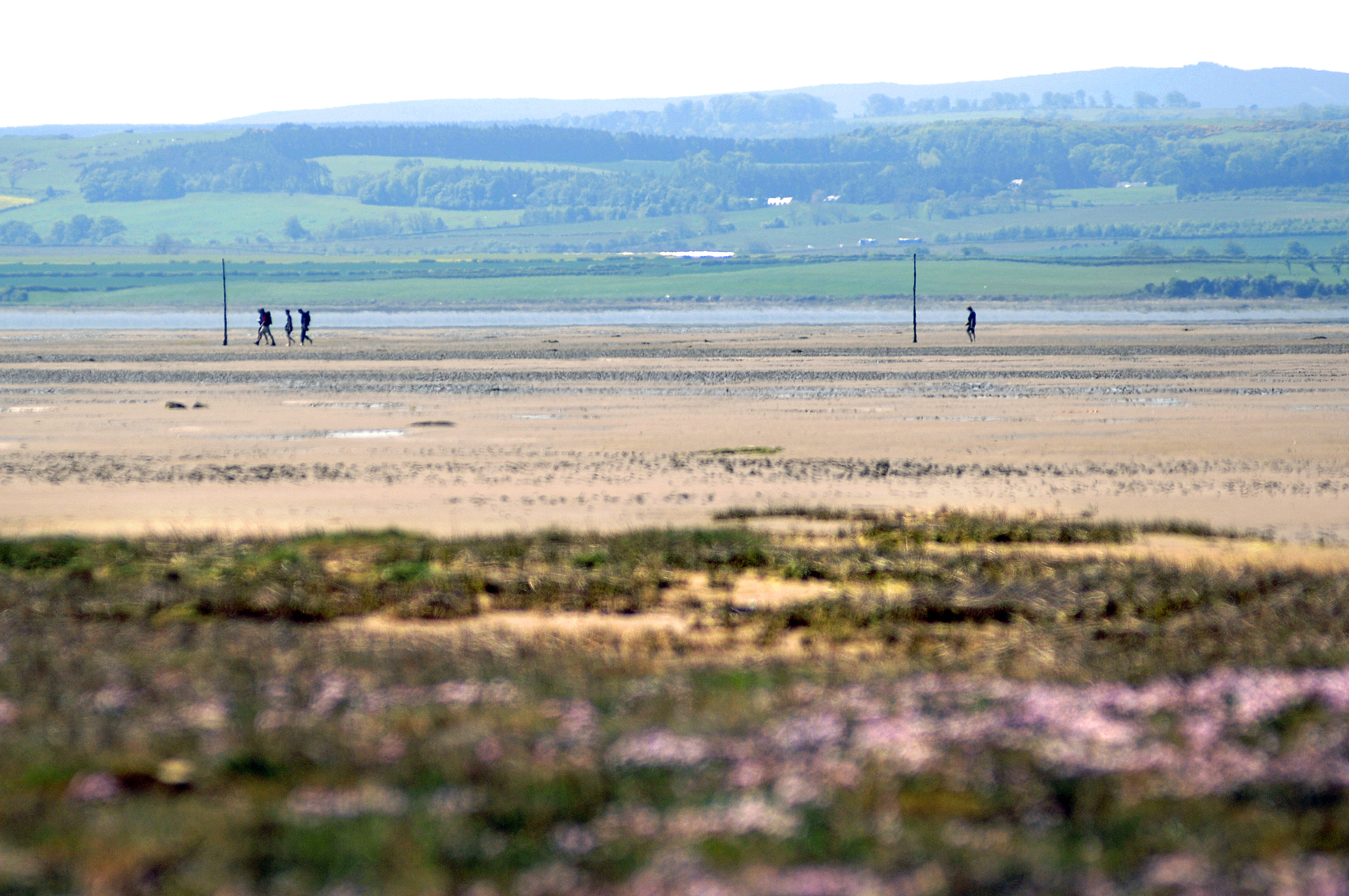Yesterday, a group of nine of us, ably led by Patrick Norris, completed the last section of the stretch of coast between Cocklawburn and Beal. We were joined by the former farmer at Goswick, James Frater, who provided lots of information and laughs.
The recce kicked off with a talk from Catherine Dunsford, one of the Lindisfarne Natural Nature Reserve shorebird wardens this summer. Catherine explained her work to the group and why Natural England selected this site near Goswick to encourage Little Terns and Ringed Plovers to nest. An important part of Catherine's role is to remind walkers with dogs to keep their animals on a short lead or to heel to prevent disturbance of nesting birds. She outlined the characteristics of other birds that breed on the Northumberland Coast including the Artic Tern that can clock up a whopping 60,000 miles each year in migrating to and from their breeding grounds, and discussion ensued about the problems facing these rare birds.
We continued down the coast, taking in the fantastic vistas over golden sands to a distant blue sea. Unbeliveable to think that this huge sandy beach was part of a vast RAF bombing range during WWII. Nigel Sumerling gave us some astounding statistics of the munitions used in the six week courses that would have trained Typhoon, Tempest, Hurricane and Spitfire pilots - 15,000 rockets and 100,000 rounds of ammunition per course!
Other WWII structures were searched for and discussed, including the anti-glider ditches and banks that would have worked in conjunction with the anti-glider posts on the sands. But it wasn't just military heritage we talked about; James provided information about life at Goswick - of the former salmon fishery, of the agricultural community, of how the environment has changed with drainage and shifts in farming methods, about the pub that served the community, the old route to Holy Island from Berwick, and much more.
Favourite part of the walk for me, well actually there's two: the salty scent rising from the thrift-specked marsh as we were caught in a heavy downpour north of the South Low; and squeezing the majority of our party into the WWII double pill box at Beal Point. We reckon they were built for 3 people max, so smaller that Patrick's rain shelter which alledgedly holds 12!
As with all three recces, the whole group provided a great deal of useful information and feedback that Peregrini will use in developing our beach guide for this amazing stretch of coast. Over the next few months we'll be pulling all this information together and aim to launch the beach guide with an inaugral trek over its entire 10km length. To keep in touch with this project, sign up for our newsletter.
Thanks in particular for this walk are due to James Frater for sharing his knowledge and also to Pauline Frater for acting as our photographer.
Other Photos

